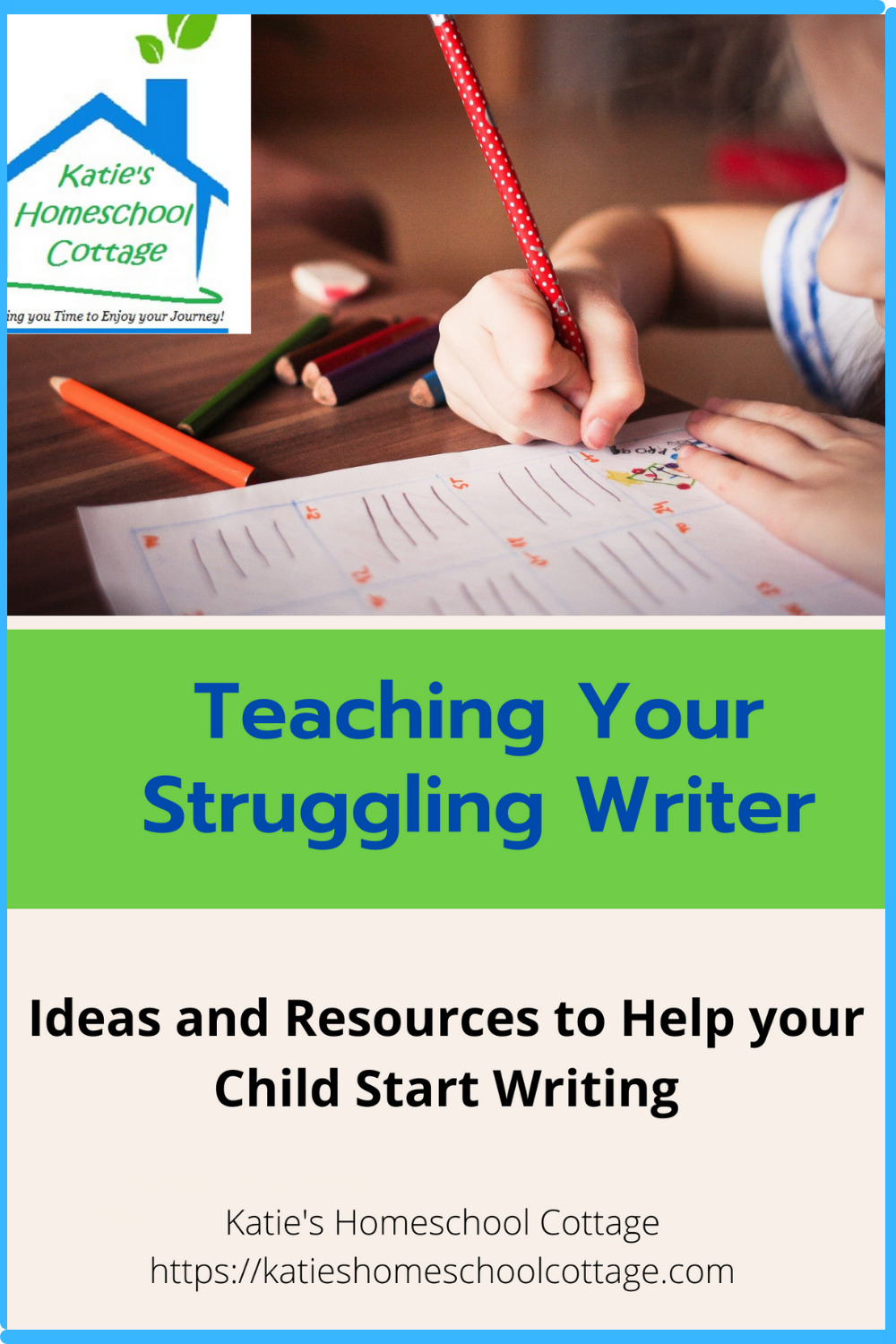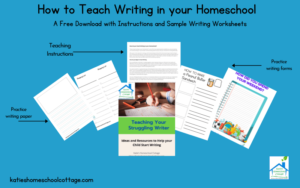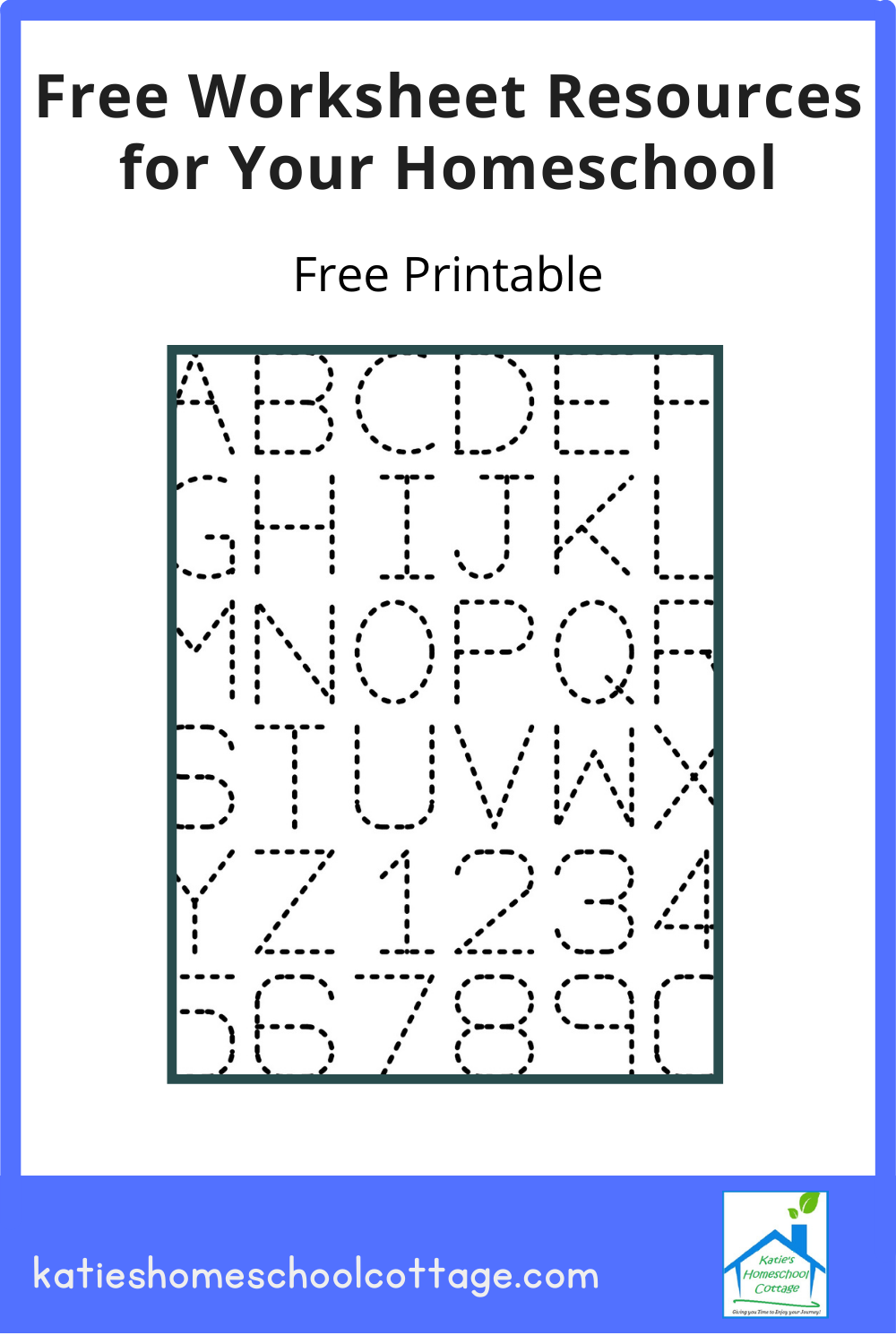How to teach writing in your homeschool is one of the most asked questions whether you are just starting out homeschooling or if you’ve been homeschooling awhile and you see your child still isn’t writing effectively.
After years in the classroom, tutoring, and homeschooling I’ve found the most natural way to teach writing in your homeschool and help your child jump over that hurdle they face when they are staring at a blank piece of paper. You know that look they get as they grasp the pencil in their fingers and look miserably at the paper in front of them when they have been told to write something, anything.
If you have older children (middle and high school) who are ready to tackle writing a 5 Paragraph Paper and beyond, you’ll want to read How to Teach Writing to Middle and High Schoolers.
How do you Begin to Teach Writing
First, something to remember is reading together aloud is going to help your child write more easily and effectively.
And, you will see why they go hand in hand in a moment.
Before, you follow any writing program and you see your child really struggling to write anything down on paper, you should check to see if there are any issues preventing your child from being able to write.
You want to wait for an appropriate age and development where child is ready to sit and hold and write with a pencil – first or second grade are ages where your child should definitely be able to do this.
Don’t try to rush your child in preschool or kindergarten years because they may not have the fine motor skills to do this yet. If you want to help develop those, you can have them practice using scissors, tweezers or their fingers to pick up small objects or color with thick crayons.
Can your child grip the pencil correctly or is it extremely awkward or even painful?
Can they use a keyboard to type words and do that fairly easily on their own?
If the issue is holding the pencil and physically writing something on paper, you might want to check with an occupational therapist.
Can your child repeat a list of 3-5 items back to you when you’ve recited it to them aloud?
If not, there may be a processing disorder you might want to explore and resolve.
I recommend Dianne Craft’s Brain Integration Therapy for parents who are pretty sure their child has some processing issues or dyslexia.
These are important issues to determine before deciding your child should be able to start writing.
Do I Need a Writing Curriculum?
This is also a common question and after my years of education and homeschooling, I may surprise you by saying not in the elementary years.
Writing curriculum does not allow your children to find and use their natural voice and communication abilities.
Writing curriculums can be too structured where your child can only write using that formula and can make their writing sound unnatural and make it more difficult for them to write without that curriculum or structure.
Then when they are older and are expected to write in different formats, they will find it difficult to adjust and follow the requested essay formats.
How do you Teach Writing to Children?
If you have a preschooler or kindergartener, you will want to read Developing Language Skills in your Homeschool during the Early Years and download my ebook Developing Language Skills in Early Years.
This will help you get off to the right start during these years and prepare you and your child for the writing strategy I’m about to describe.
You’ll will also want to watch the video demonstrating how to begin teaching your child how to read.
Developing Language Skills in your Early Learner
If you have children who are entering elementary years and older, the following strategy will definitely help your child begin to write more naturally and easily no matter the assignment!
Video about How to Teach Children to Start Writing
Pre-Writing Skills are Important
One of the most important things to do in teaching your child to write is develop prewriting skills.
This sounds scarier than it really is. It all starts with training your child to organize their thoughts so they can more easily put them down on paper.
They way to do this takes some practice but it’s not very difficult.
Begin reading aloud a chapter of an easy to understand book or a short book that is written in narrative style or sequential/chronological order.
Have your child listen to it and let them know they will be telling you what happened when you finish reading.
When you are done reading, have your child think and remember what they heard and retell it to you in the correct sequential order.
This is fantastic practice and a use of thinking skills that involves not only remembering and putting in order a list of events, but also recalling details and retelling, using vocabulary from the reading in the proper context (which demonstrates they understand and can use the vocabulary and makes it theirs), summarizing, and determining what to include and what not to include in the retelling (distinguishing what is important and not important.)
Not only are these all important for prewriting but fantastic thinking skills which will be used in speaking and other areas.
Giving your child a topic and information to use to practice putting in the proper order and putting it in their own words eliminates the need for them to figure out what they need to write about and lets them focus on just the process.
No more deer caught in headlights!
No more tears!
No more frustration!
You’ll notice I do not recommend starting to write using creative writing and story prompts.
That is because if children don’t have very good imaginations or are not natural writers they will find it very frustrating trying to perform two difficult tasks when writing – first, trying to invent the content of what they are going to write and second, trying to come up with that content at the same time they are trying to put it in sequence and what words to use to write down their story on paper.
After you practice this habit with your child and they can do this retelling fairly well, it’s time to start putting words down on paper.
To start, have your child retell what you have just read and then back up to the first sentence they said and have them say it again.
This time have them write the first sentence on their paper word by word.
You may have to help them repeat the sentence word by word a few times for them to get the idea of what you are doing.
Once you’ve completed your first sentence, move to the next sentence they tell you about and again write it down word for word.
Don’t pay attention to penmanship or spelling or anything else, just getting the content on the paper.
If you correct your child while he starts to write they will be afraid to write anything because they will fear it is wrong.
They will be self editing before they give themselves a chance to put anything on the paper.
Continue this practice during the week a few days per week (not every time you read something, just sometimes).
You will see your child will begin to write a sentence at a time after saying it aloud and then a couple of sentences.
Then soon be able to talk to themselves as they write an entire paragraph at a time.
It does take some time and patience and persistence in developing this habit, working on it a few times per week, but it definitely pays off.
Your child will be writing naturally and using their own voice, not a formal stiff organized pattern from a curriculum.
Sign up here to receive more information about writing
Short Practice for Writing Skills
When using this method, you can mix in some other writing practice that is quick and natural and part of life.
Ways to add in writing practice during the day –
- thank you card
- birthday or holiday card
- postcard
- shopping list
- penpal (can be a grandparent or sibling)
- nature journal
- look at a picture or draw a picture and write what is happening in that picture
For practice forms and writing worksheets to get you started, download this free practice writing packet, How to Teach Writing in your Homeschool Free Worksheet Packet.
Once your child reaches middle and high school, that is the time to begin the refining process of writing specific forms of essays and including certain components of the essay and practice developing a more varied and mature sentence structure.
For even more tips and practical ideas, especially for your struggling or reluctant writer, you will want to visit my podcast page for all the resources listed there and listen to what I have used to help these kinds of learners.
Look for Teaching your Struggling Writer How to Write on my Podcast Page.
What Kinds of Writing Should I Teach in Middle and High School?
There are certain kinds of essays or papers your middle and high school student should practice and master during these years. Whether they will be going onto or college or not. Writing these kinds of essays not only helps your child develop writing skills and learn what may be expected in an upper level education but it also develops more thinking skills that can be applied to all areas of life.
The following essay formats are recommended during the middle and high school years:
- 5 paragraph informative essay
- persuasive/argumentative essay
- analytical essay
- narrative essay
- descriptive essay
- compare and contrast essay
- college application essay
- a written speech
Announcing a brand new Online Academy and Writing Course!
I have a new online academy with a self-paced course for middle and high schoolers to teach them how to write a proper 5 paragraph essay step by step.
This course is called How to Write a 5 Paragraph Essay Naturally at Katie’s Homeschool Cottage Academy.
You’ll want to try out our Free Brainstorming for a 5 Paragraph Essay Course as a sample of the full length course!
Please share this information with other homeschoolers who may be struggling to teach their children how to write!
My mission is to help other homeschoolers stress less about this and make writing less of a struggle for children and help feel like successful writers!
Thank you!







